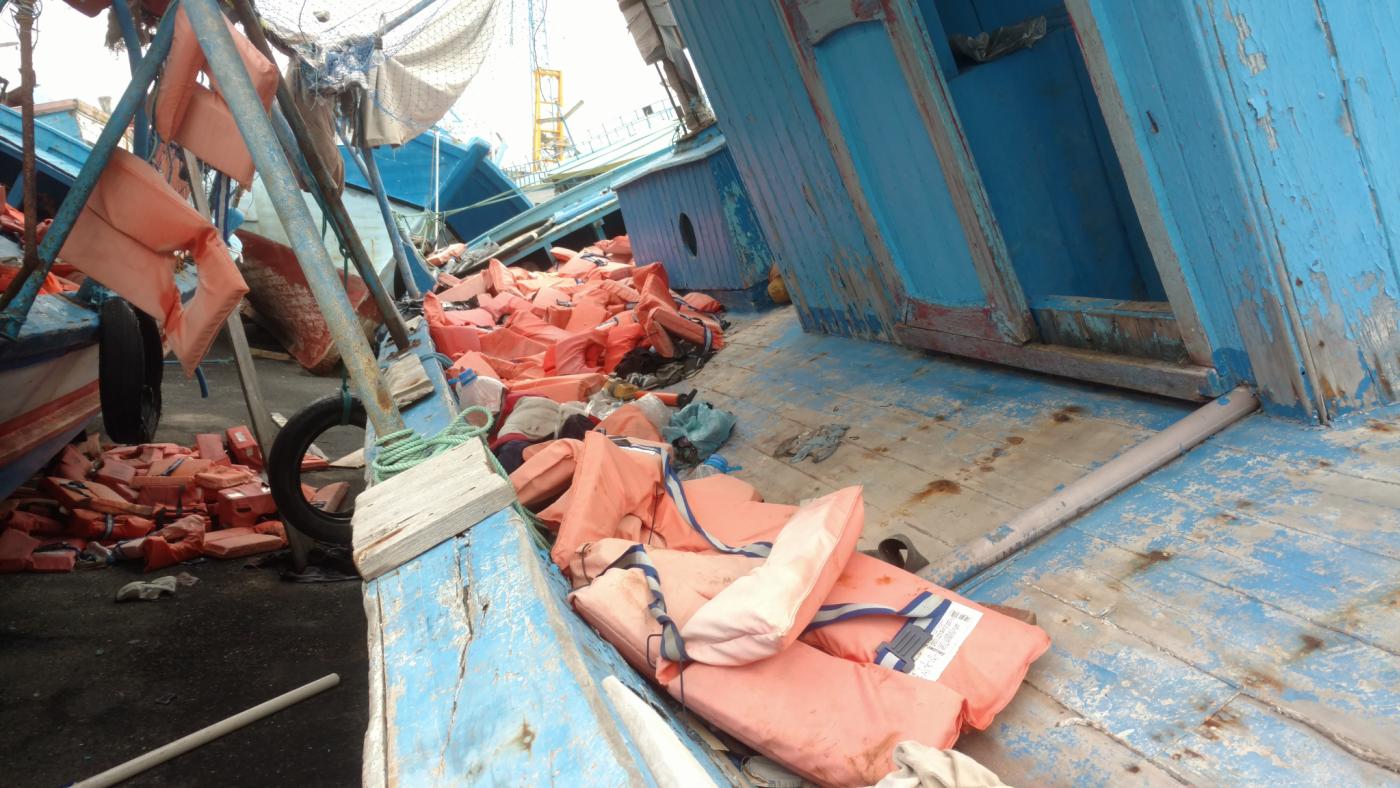Photo credits: Valentina and Accio – Video credits: Tommaso, Valentina and Jerry
Overthefortress Campaign begins its work of independent investigation and monitoring in Ragusa’s province. We have chosen to start from the hotspot of Pozzallo where – since the 1st of January – 16,158 people have landed. That is the first Italian stop of the central Mediterranean route; yet migrants’ journey begins much further South. It starts in Northern Africa, or in Sub-Saharan Africa, or in the Horn of Africa, or in Middle East. People from very different places come together in Libya – the country where most of the migrants who land on Italy’s shores come from.
The facility in the port of Pozzallo is a former CPA [Centro di Prima Accoglienza, a centre for initial reception] and is now one of the four Italian centres in which the hotspot policy is applied. Keep in mind that the hotspot policy was established with a circular letter of the Ministry of the Interior, with no law actually prescribing it. The process begins on the open sea, and its main goal is to identify the migrants – by means of compulsory fingerprinting – and to detect alleged traffickers. The hotspots are supposed to be transit facilities, but they actually turned out to be stand-off places with no regulation. Borderline Sicilia have denounced several times the violation of human rights, such as the complete disregard for the right to be informed and the practice of “deferred refoulement”, which actually prevent migrants from applying for international protection.
We asked Lucia Borghi from Borderline Sicilia – an organization that has been monitoring the region for years – to explain us the situation. The Government’s main objective is to identify the alleged traffickers: the investigations take place on the boats, and take priority even over the first aid procedures. The process is based on guidelines requiring the officers to arrest two people for each boat – the arrest is then paraded on the medias in order to receive the EU’s praise. This procedure is problematic in several ways. As a matter of fact, the alleged traffickers to be victims of trafficking themselves, who only followed the actual trafficker’s instructions in exchange for a discount on the journey’s fare. Their statements are supported by the fact that many of them come from countries far from the sea and then have no sailing expertise. Upon landing, the Government’s commitment to assure a decent reception is far inferior to the effort put in conducting police operations.
People in the hotspot’s facilities should be relocated after a maximum of 48-72 hours, but this hardly happens. Most of them are actually kept there for weeks. The official reason is the lack of rooms in other reception structures, in particular for unaccompanied minors and vulnerable people. It’s a paradoxical situation: those who should leave the centre first because of their vulnerability are actually the ones who stay there longer. We met four minors in the streets of the marina: they all declared they had landed on September 12th. The migrants are allowed to go out of the centre after the first 72 hours. Not out of generosity, though. Leaving the centre was initially forbidden, but tension and trouble always arise when you lock someone in an overcrowded room. The facility’s maximum capacity is 180 to 200 people, yet it hosts up to 600. The facility consist only of two huge dorms, so it’s impossible to separate men and women, minors and adults, despite of what many European regulations impose.
Giuseppe Cannella, who works as a psychiatrist for MEDU (MEdici per i Diritti Umani, “Doctors for Human Rights”), further elaborates on the issue. As a doctor, he particularly focuses on the traumas experienced by the refugees before, during and after their journey. Most of them come from Libya, a country described as a hellhole. Refugees report kidnappings and systematic violence. Both armed gangs and police officers make unlawful arrests, and then ask for a ransom. In Libyan jails a prisoners can be tortured while on a phone call with a relative or a friend, in order to extort money from them. Those who can’t get the money are forced to pay their debt by working in inhuman condition, or worse.
Men, women and children are all subjected to the same treatment. They face the risk of crossing the sea bearing the wounds of such violence. Giuseppe tells us that even after being rescued, migrants face a new trauma, as they are once again surrounded by guns and uniforms, once again in a dehumanizing situation. At the port, they are treated like objects, their names replaced by numbers.
Across a large, overcrowded room, people with scabies are shouted at, to rudely told to step aside.
It’s hard for us to describe the how we feel while listening to their stories, while we stand in front of the sea where their tragedies take place, just a few steps away from wrecked boats and hundreds of life jackets. We discuss about what we have just heard, confused by the resilience of the young African men who, despite all the violence they’ve gone through, tell us “I’m fine”. It’s hard for us to recap all the information we have gathered during the earliest days of our travel, but it’s clear that the Pozzallo hotspot and the inhuman conditions it offers symbolize the failure of the Italian and European refugees reception measures. That’s not the kind of integration we believe in, a dignified model of reception that exists on a grassroots level and that we are going to discover in the next steps of our journey.














